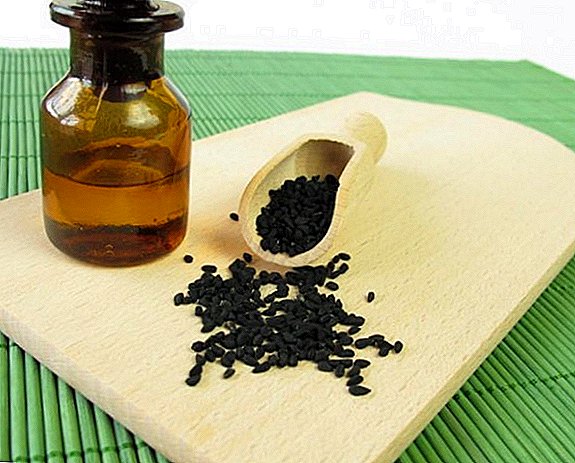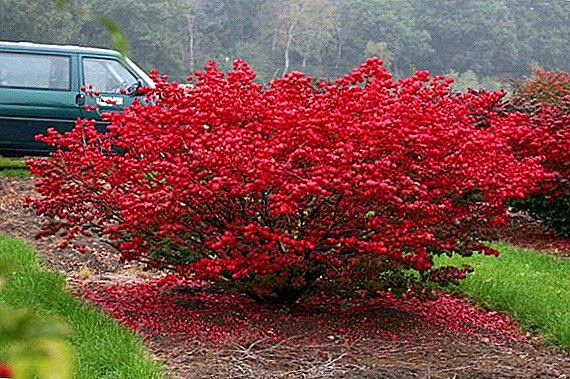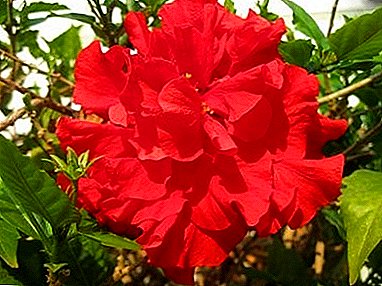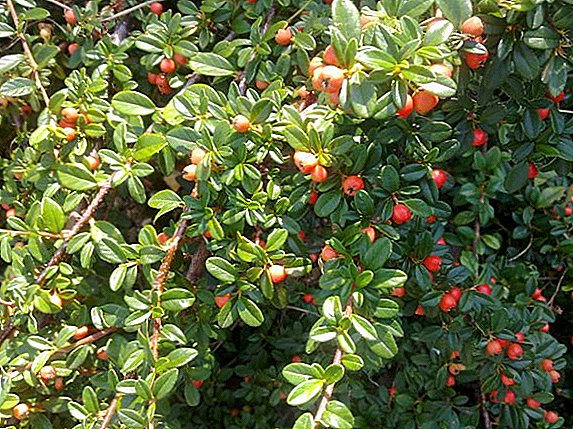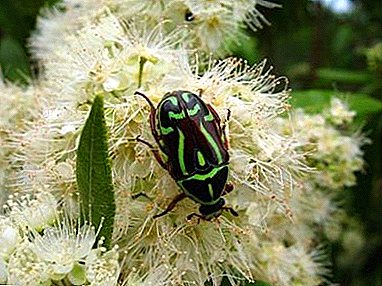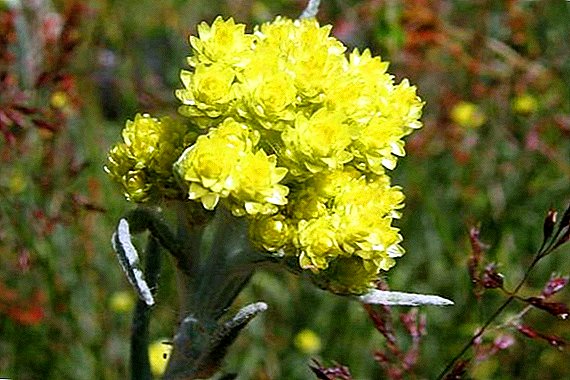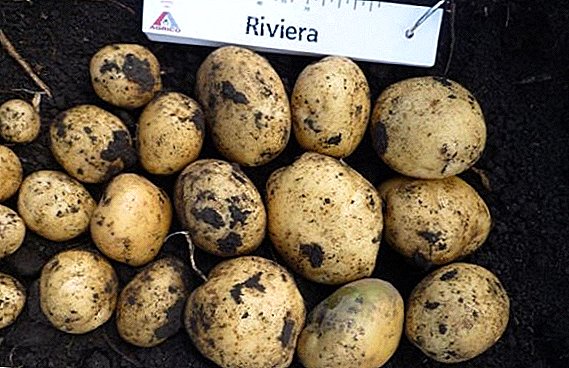 Potatoes, like second bread, should have a high nutritional value, excellent taste properties and a pleasant aroma. These are the characteristics of the new hybrid of the tubers, whose popularity is increasing every year - the Riviera potatoes. How to grow this variety of potatoes and how to take care of it - this will be discussed in our article.
Potatoes, like second bread, should have a high nutritional value, excellent taste properties and a pleasant aroma. These are the characteristics of the new hybrid of the tubers, whose popularity is increasing every year - the Riviera potatoes. How to grow this variety of potatoes and how to take care of it - this will be discussed in our article.
Inference history
 "Riviera" refers to a rather young varieties, which was registered in 2007. Vegetable comes from Hollandwhere it was bred by a large local holding Agrico, which specializes in the cultivation of potatoes of various varieties.
"Riviera" refers to a rather young varieties, which was registered in 2007. Vegetable comes from Hollandwhere it was bred by a large local holding Agrico, which specializes in the cultivation of potatoes of various varieties.
At present, the tuber crop is brought into the State Register of Varieties of Ukraine, Russia, where it is recommended for cultivation in the central regions of the state. However, due to its drought tolerance, the crop yields an excellent harvest in the southern regions.
Botanical description
Variety "Riviera" refers to superearly speciesIt is precisely because of this that he quickly fell in love with gardeners in many countries.
The early terms of ripening have varieties "Rozara", "Gala", "Luck", "Queen Anna", "Bellaroza", "Veneta", "Zhukovsky Early", "Uladar", "Timo Hankian", "Impala", "Red Scarlett. "
Tubers
"Riviera" forms even, oval or oval-round tubers with a slightly rough light yellow dense skin, on which small eyes are located. The pulp of the vegetable is grainy, from light yellow to cream shades. From one bush you can get 10-14 tubers, with an average weight of one from 100 g to 170 g.  Tuber flavor high enough, on a 5-point scale, experts regard it as 4,8. When boiling potatoes are well boiled soft, "not glued together", making it perfect for mashed potatoes. In its composition tubers contain 12-19.6% starch. As for the commodity properties of "Riviera", their experts estimated from 80% to 95%. Storage capacity is quite high and amounts to 92-94%. In addition, the fruits have excellent resistance to mechanical damage, tolerate transportation.
Tuber flavor high enough, on a 5-point scale, experts regard it as 4,8. When boiling potatoes are well boiled soft, "not glued together", making it perfect for mashed potatoes. In its composition tubers contain 12-19.6% starch. As for the commodity properties of "Riviera", their experts estimated from 80% to 95%. Storage capacity is quite high and amounts to 92-94%. In addition, the fruits have excellent resistance to mechanical damage, tolerate transportation.
Important! Due to the fact that the potato begins to ripen very early, the tubers are formed before the onset of too hot weather. In addition, well-developed roots allow you to get the right amount of water, even from great depths.
Bushes
Sprawling potato bushes, rather tall, erect, belong to the intermediate type. During the growing season, flower coronas of red-violet color are formed on the plant. On a long dense stem, whose height can reach 90 cm, large wavy leaves of a dark green color are located. "Riviera" is distinguished by a large, powerful root system, thanks to which in dry weather the plant is capable of extracting water at great depth. 
Characteristic variety
Sverkhranny grade of potatoes "Riviera" is not picky about growing and can easily tolerate some shortcomings in the care.
Disease resistance
One of the disadvantages of this variety is its poor resistance to late blight - A fungal disease that affects the tubers and stem. According to statistics, over 10% of the entire potato crop is affected by late blight, and due to late prevention or treatment, this figure may increase to 50%. The most comfortable conditions for the development of the disease is considered to be high humidity (about 90%) and high air temperature (more than + 15 ° С).
Learn how to prevent and deal with late blight potatoes.
Symptoms of the disease are dark and brown spots on the foliage and stem. On the underside of the leaves, fungal white deposits are formed, which are easily transported by means of water or wind, which greatly aggravates and complicates the fight against the disease. The main danger of late blight lies in its rapid rate of spread. To combat it, use fungicides. As a preventive measure before harvesting, it is recommended to mow all the tops and burn it.  The main pest of potatoes was and remains the Colorado potato beetle, which eats the leaves of the plant. The beetle multiplies rapidly and is most active during the budding of the culture. If the pest destroys 70-80% of the tops, the yield will fall almost in half. To destroy the beetle using a solution of wood ash and various insecticides, which, due to the rapid adaptation of the pest, must be alternated.
The main pest of potatoes was and remains the Colorado potato beetle, which eats the leaves of the plant. The beetle multiplies rapidly and is most active during the budding of the culture. If the pest destroys 70-80% of the tops, the yield will fall almost in half. To destroy the beetle using a solution of wood ash and various insecticides, which, due to the rapid adaptation of the pest, must be alternated.
Read also about the fight against the Colorado potato beetle folk methods (mustard and vinegar).
With increased humidity, damage to the leaves and stem of potatoes can be observed in small gray-brown spots. This is a symptom macroporiosis, or dry blotch. In order to fight it, one should not allow water to stagnate around the bushes. As preparations for treating a plant, Fitosporin-M has the highest efficiency.
If the plant is covered with pink bloom and begins to fade, it is likely that it is affected by dry fusarium rot. The tubers have a healthy appearance, but in the process of storage they become covered with small spots with a little fuzz, dry up, and in the middle there are voids. To prevent the appearance of dry rot, it is necessary to carry out the disinfection of seed material.
The advantage of this potato variety is that it suffers much less from diseases than other varieties, as it has time to give fruit before diseases and pests begin to spread in large quantities. 
Precocity
"Riviera" - early, very early variety, the fruits of which are beginning to collect at 45-65 days, depending on the region of growth.
Tuber crops are already purchased on the 40th day after sowing.
Important! There is no need to leave tuber crops in the ground for more than 50-60 days, since the risk of their infection by late blight increases.
Yield
Potato is different high yield. From one bush you can get 10-14 large-sized tubers, weighing 100-170 g. At the end of the growing season, about 45 tons of potatoes can be harvested from one hectare.
Video: yield of potatoes "Riviera"
Stickiness
The storage capacity, that is, the ability to store, of this variety is quite large, especially if the crop was harvested in the late period. The percentage of keeping quality is about 93%, which is completely unusual for other early ripening varieties of vegetables, which are stored only until December.
It is interesting to read about the beneficial properties and use of potatoes.
Growing areas
The most popular grade "Riviera" enjoys in the central regions of Russia, Ukraine, Moldova, Belarus. Vegetable can reveal its maximum performance in areas with moderate climatic conditions. In the northern latitudes, the vegetable does not show the maximum return, however, when organizing competent agricultural technology, it can give an excellent harvest.
Landing rules
Potatoes "Riviera" feels great in open sunny areas, prefers nutritious, loose soils.
Optimal timing
The optimal time for planting potatoes will depend on the region and climate, where it will grow. Tubers must be planted in heated soil. As a rule, the soil warms up when the first buds appear on the birch trees. This period is considered the most successful for planting.  In different regions, the landing time is different: in April, provided that the ground is well warmed up, or in May. It is not recommended to hurry, as the potatoes will not germinate anyway, if the soil is not heated at least 6-10 cm deep.
In different regions, the landing time is different: in April, provided that the ground is well warmed up, or in May. It is not recommended to hurry, as the potatoes will not germinate anyway, if the soil is not heated at least 6-10 cm deep.
Location selection
On the yield of a variety of great importance place. For the "Riviera" is better to choose flat, well lit, sheltered from cold winds plot. If there is a constant shadow, the tubers will grow, but they will not be exactly the size.
Important! Potatoes can not be planted in the area where previously grew plants that are affected by the same diseases: tomatoes, strawberries, eggplant. The most profitable precursors are legumes, cabbage, cereals, pumpkin.
It is recommended to plant potatoes on the same plot with a break of 3-4 years. As mentioned earlier, sowing is carried out in April or May, but only under the condition that the soil has warmed at least + 7 ° С. However, the most comfortable temperature indicators of the soil are + 10 ° C and higher.
Soil preparation
Soil preparation should begin in the fall. For this, the ground is carefully dug up and fertilizers are applied in 5-7 kg of humus, 40 g of potassium and 50-60 g of superphosphate. If the soil has an increased level of acidity, it is recommended to add 0.5 kg of lime or dolomite flour.
Did you know? In order to determine the acidity level of the soil at home, you should throw a small piece of earth into the table 9-% vinegar. If no reaction followed, then the acidity of the soil is increased. If the color of vinegar has changed, and bubbles appear on the surface - the acidity is neutral.
Immediately before planting potatoes, in spring, the soil is fertilized with organic and mineral substances. As a top dressing you can use a mixture of humus or compost (2 buckets) and ash (0.5 l).
Preparation of planting material
Preparation of material for planting begins 40 days before sowing, and it carried out in several stages:
- process tubers solution "Fitosporina-M". Paste in a ratio of 1: 2 diluted with water, for 1 liter of water take 4 tbsp. concentrate;
- give the potatoes to dry and transferred to a warm, dark room with a temperature of + 12-15 ° C for 10 days;
- transfer the tubers to a warmer and lighter room, the temperature of which is not lower than + 15 ° C. Once a week, seeds are sprayed with clean water and inverted. During this time, small strong shoots should form on the tubers;
- Immediately 30 minutes before planting the potatoes, it is placed in a solution of Fitosporin-M and Boroguma-M. The solution is made in the following way: 300 ml of Fitosporin and 100 ml of Borogum are added to 5 liters of pure water. Such manipulations will protect the tubers from various diseases, strengthen their immunity.

The optimal weight of planting tubers is 65-75 g.
Scheme and depth of landing
As a rule, “Riviera” potatoes are planted according to the 65 x 35 cm pattern, with up to 10 cm depth in the ground. That is, the seeds are planted at a distance of about 35 cm from each other, 65-70 cm between the rows. To draw a straight marking, they use a string or fishing line.
Planting potatoes can be done in several ways:
- Classic. A spade form holes, about 10 cm deep, in which the tuber is placed. If fertilizers have not been applied since the fall, they can be added directly to the dug holes, but then their depth should be at least 15 cm. Then the holes are covered with soil and carefully leveled from above with a rake.
- Trench. This method of planting is more suitable for the southern regions where hot, dry summers predominate. It is organized according to this algorithm:

- dig a trench, a depth of 20-30 cm;
- the bottom is lined with hay or mown grass;
- tubers have sprouts up the length of the trench, at a distance of 25-30 cm from each other;
- the pit is covered with soil, leveled.

Important! The depth of the trench depends on the soil moisture and climatic conditions. The drier the soil and the climate, the deeper should be the fossa.
How to care
"Riviera" refers to undemanding varieties of potatoes, but timely proper care for them will significantly increase the yield.
Watering
Potatoes prefer moist soil, especially during the formation of tubers. Therefore, in the absence of regular rain, it is necessary for the plant to organize watering. Each bush will need 2-3 liters of cold water. To keep the moisture longer, after watering the plant spud.
With enough precipitation, potatoes do not need additional moisture. 
Top dressing
When the first seedlings appear, the plant is fed up. To do this, use two types of dressing: liquid and dry. Liquid fertilizers are sprayed on the foliage, dry ones are applied during loosening.
Mineral dressing should be made as the plants mature:
- at the beginning of growth (before hilling): 50 g of ammonium nitrate is diluted with 10 liters of water and 0.5 tsp added. copper sulphate;
- when 4 sheets are formed on a bush: foliar feeding is carried out on the foliage with this solution - 2 g of “HUMAT +7” dilute 10 liters of water (3 liters of funds are used per 1 hundred square meters);
- at the end of flowering: a similar extra-root sub-feed is carried out - 100 g of superphosphate is mixed with 10 liters of water (consumption: 1 l per 1 square meter).
Important! An excess of nitrogen fertilizers can provoke an intensive growth of foliage and a lag in the growth of tubers. In addition, excess chemicals can adversely affect the taste of tubers.
As organic use:
- bird droppings diluted with water at a ratio of 1:10. It is introduced into the furrows between the rows;
- Mullein diluted with water 1:10. Make a similar litter;
- infusions of herbs: nettle (stalks and tops) are fermented in water, filtered, the resulting medium is treated potatoes, every 10 days.

Weeding and loosening the soil
A mandatory procedure for growing potatoes is weeding and loosening the soil. Such events will help the tubers get enriched with oxygen, get the maximum amount of nutrients from the soil. In addition, loosening allows you to protect the root system from various diseases, to prevent the "exposure" of the roots.
Removal of weeds is carried out before each soil loosening, as well as immediately after precipitation. If we do not weed, then the weeds, hitting the wet ground after loosening, will begin to grow with a new force.
Hilling
Often, the root system grows to the sides and upwards, which leads to the fact that most of the roots are on the surface. This reduces the yield of the plant, therefore, spend soil hilling. The first procedure is carried out when the height of the stem reaches 15-20 cm. Then the soil around the bush is tucked every 2-3 weeks.
However, when hilling, observe several important rules:
- spud bush should be only in the morning or evening. If you do it during the day, in the heat, the tubers can "bake" in the ground;
- spud plant should always be after rain or watering.

Preventive treatment
In the process of growing potatoes do not forget about preventive measures. To protect the plant from pests and various diseases, it is treated with special chemicals. In order to prevent the appearance Colorado potato beetle, the tops are sprayed with infusion of ash (2 liters of ash insist in 10 liters of water). Such events are carried out at least three times a season, and the first treatment is done when the stem reaches a height of 10-15 cm.
To combat the Colorado potato beetle, these drugs are used: "Prestige", "Taboo", "Regent", "Confidor", "Tanrek", "On the spot", "Commander", "Lightning".
In order to avoid defeat late blight, potato tops are processed several times according to this algorithm:
- when the stem reaches a height of 25-30 cm, the bush is sprayed with a solution of Fitosporin-M;
- before flowering for processing use "Eksiol" or "Appin";
- a few weeks after flowering, the plant is treated with contact-acting fungicides, for example Ephal, copper oxychloride;
- during the ripening of the tubers, the potatoes are protected by “Alufit”.
 For processing the bush choose an overcast day. If after spraying will precipitate, then the procedure must be repeated.
For processing the bush choose an overcast day. If after spraying will precipitate, then the procedure must be repeated.
Did you know? Everyone knows that if you drop iodine on your potato, it will turn blue. However, there are varieties of potatoes that initially have a blue color, not only the skin, but also the pulp. One of the common varieties of such potatoes is 'Linzer Blaue'.
Harvesting and storage
Harvesting potatoes "Riviera" begins 50-60 days, a maximum of 70 days after planting. To determine the "readiness" of tuber crops, it is recommended to carefully dig one bush and look at the ground around the tubers - if it is cracked, it's time to harvest.
Dig potatoes should be on a sunny day. It would be good a few days before harvesting the tuber crops to mow all the tops and remove it from the site. This will enable the potatoes to ripen, stand, and also warn him of diseases that can pass from the tops to the tubers.
Learn more about the conditions and methods of storing potatoes (in the apartment).
Tubers are carefully dug and scattered over the ground to dry slightly. Then the fruits are collected and transferred to the shed or under a shed for two weeks. During this time, all possible diseases should appear: late blight, scab, etc. Potatoes are sorted, rotten and damaged fruits are harvested, and healthy ones are sprayed with the “Anti-rot” solution.  Keep the potatoes in a dry, well-ventilated, cool place, the temperature in which does not rise above + 7 ° C, and humidity - not higher than 85-90%. At higher temperatures, the tubers will begin to germinate, and at lower temperatures, they will lose their taste. It is recommended to paint the cellar in which the tubers will be stored with lime in order to disinfect the room and lay the bottom with a spit.
Keep the potatoes in a dry, well-ventilated, cool place, the temperature in which does not rise above + 7 ° C, and humidity - not higher than 85-90%. At higher temperatures, the tubers will begin to germinate, and at lower temperatures, they will lose their taste. It is recommended to paint the cellar in which the tubers will be stored with lime in order to disinfect the room and lay the bottom with a spit.
Advantages and disadvantages
Many growers agree that the potato "Riviera", compared to other varieties, has numerous advantages among which it is possible to distinguish:
- earlier maturation of tubers and the opportunity to get two harvests in one season;
- high yields, even in dry periods;
- long shelf life, tubers bloom up over 93%;
- good transportability;
- excellent taste of potatoes;
- attractive appearance of the fruit;
- excellent disease resistance.
As for the shortcomings, the most significant are:
- the need for preventive treatment of late blight and scab;
- the inability to obtain their own seeds from the berries;
- quite high cost of planting material.
Video: Riviera potato variety
Among the top varieties of potatoes "Riviera" most fond of vegetable growers. And this is not surprising, because the culture has high yields, while it is unpretentious in growing and can grow well in drought conditions. Potato has a slightly sweet taste, pleasant aroma, does not boil soft, allows you to cook just the perfect mashed potatoes.


